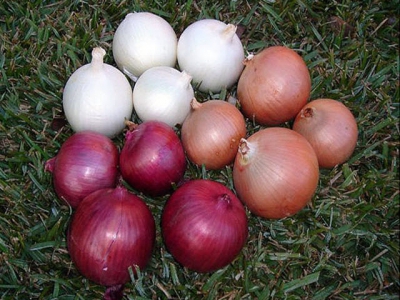Learning about onion production

Records show that people have been harvesting onions for about 7 000 years. The Egyptians were cultivating them around 3500BC, and used onions to treat many medical conditions.
As with all cultivated vegetables, there has been a profound change in onions since then. The vegetable is the sixth most widely used crop in the world and the third-largest in the US, and has been bred for varying climatic conditions and culinary preferences.
Some are sweet and mild and can be eaten like an apple; others are highly pungent, and only a brave person would take a bite out of a raw one.
Onions belong to the Allium genus and the onion that we all know is Allium cepa. Spring onions, bunching onions and scallions are different species; these are non-bulbing, with a slight swelling at the base, and are used for different culinary purposes. Leeks, chives and garlic are also different species of the Allium genus.
In the US, Allium roylei, a wild species from Afghanistan that produces a small bulb, has been crossed with A. cepa. This has resulted in a variety that is resistant to botrytis leaf blight. Breeders often use wild species that have no commercial potential to breed disease-resistant domesticated varieties.
Apart from climatic adaptability, there are also colour and shape preferences; brown, yellow and straw-coloured onions are available. White onions are very popular in Mexico, and white is the standard colour for dehydration onions. There are perfectly good brown onions suited to dehydration, but the market expects them to be white.
I recall driving through the Swat Valley in northern Pakistan at onion harvest time and seeing scores of lorries going to market, laden with red onions. I saw no other colour of onion there.
In South Africa, demand for red onions seems to be slowly increasing. These can be red on the outside only or have red flesh too. The latter are preferred, as they provide colour to salads and other dishes.
Flavonoids
Differently coloured onions also have different flavonoids (plant pigments). Red onions, for example, like red beet, have anthocyanin, which contributes to the colouring. Quercetin, an antioxidant, is another important flavonoid. It is concentrated in the outer ring and highly pungent onions have the highest levels.
Organosulphur levels are also high in Allium species. They contribute to the characteristic smell of this vegetable and are believed to have anti-inflammatory, anti-allergic and anti-microbial effects.
Health benefits
Most onion cultivars consist of about 89% water, 4% sugar, 1% protein, 2% fibre and 0,1% fat. They contain essential nutrients such as vitamins C and B6 and minerals such as calcium and magnesium.
Eating onions is claimed to dramatically reduce the incidence of many cancers and the chance of strokes and heart conditions. Less well known is that onion consumption is said to improve bone density. It is claimed that eating 1g of onions for every kilogram of body weight daily helps to control osteoporosis.
Onions are not usually eaten for health benefits, but for their culinary attributes. These added advantages make onions an even more attractive crop to grow.
Related news
 How to water-treat seed
How to water-treat seed It is sometimes advisable to treat seed in order to remove a pathogen, or as a precaution before sowing. For example, capsicums (chillies and peppers)
 Beware those aphids in your cabbage crop
Beware those aphids in your cabbage crop The recent announcement that aphids and not leaf hoppers are the vector for the spread of the brassica stunting disorder virus (BSD) makes sense.
 Cabbage Aphid
Cabbage Aphid Common name: Cabbage Aphid, Scientific name: Brevicoryne brassicae (Linnaeus), Family or class: Aphididae